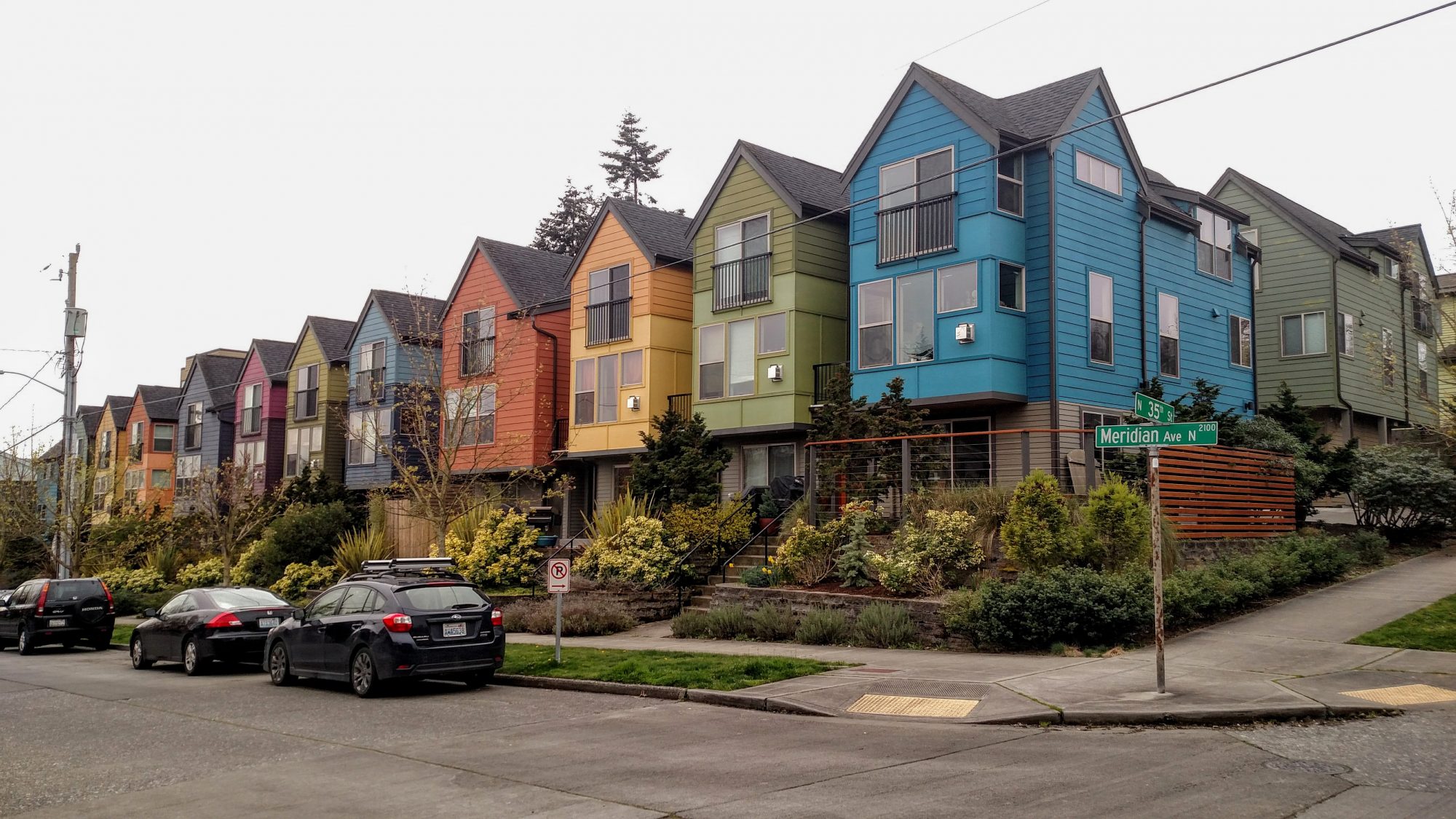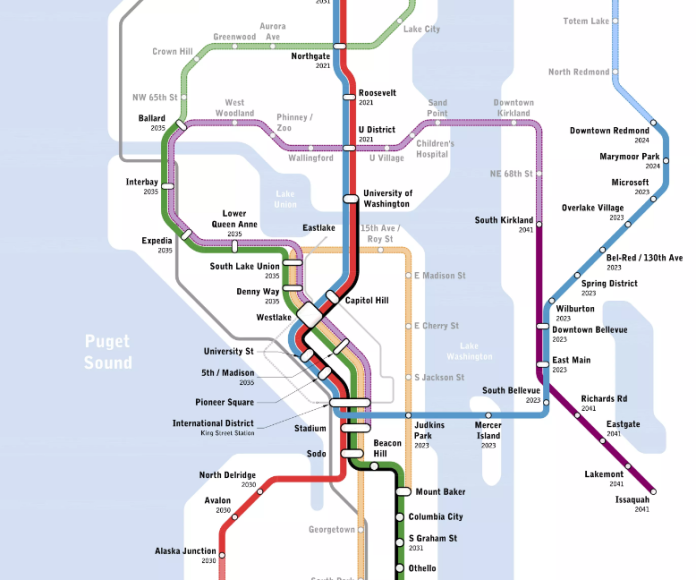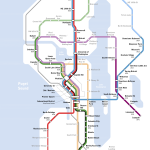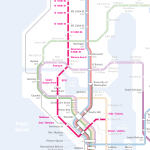As 2017 draws to a close, we’re reviewing our top ten most read articles of the year. Looking back, themes emerge, such as the fact that readers of The Urbanist really like rail maps. So, cartographers, get working on new material for 2018. Other popular topics were eliminating single-family zoning and South Lake Union’s mode hierarchy issues.
1) Map of the Week: Seattle Subway Vision Map
In July, Seattle Subway released an updated vision map, and we covered the details in what turned out to be our most read article of the year. See No. 6 for our suggestion to fine-tune the vision.
2) Map of the Week: Sound Transit’s System Expansion Map
In August, Sound Transit released a new map illustrating the projects funded in ST3. Judging by readership, many people are anxiously anticipating built out of more light rail in Seattle.
3) Did Seattle Just Cross The 700,000 Population Mark?
In February, we hypothesized that Seattle had just crossed the 700,000 population mark, growing at a pace exceeding 20,000 residents per year. Later estimates concurred that Seattle crossed the 700,000 mark in 2017, and it doesn’t appear the pace of growth has let up.
4) Adaptive Signal System Kicks Pedestrians to the Curb
Mark Ostrow of Queen Anne Greenways critiqued the Seattle Department of Transportation’s adaptive signal shenanigans that made walking, biking, or taking transit across Mercer Street even more miserable and time consuming. Adaptive signals save motorists a little bit of time–not that they’ve stopped complaining about the Mercer Mess–but it’s made cross traffic wait even longer, delaying Route 62, 40, and 70, and has frustrated pedestrians who find themselves waiting at the curb while drivers get the green.
5) South Lake Union Is for Cars
In April, we made the case that South Lake Union was still fundamentally an auto-oriented neighborhood despite the urbanist window dressing. We pointed to the proliferation of huge parking garages and transportation decisions that continue to put motorists before people walking, biking and riding transit. Later this year, Ryan Packer followed his article up with a manifesto arguing for a better vision: South Lake Union is for Pedestrians.
6) Building ST4: The Case for Upgrading RapidRide E to Rail
I argued that First Hill and the Aurora Avenue corridor sorely needs rail transit, despite being omitted from ST3. (The RapidRide E is Seattle’s busiest bus after all.) We followed this up with an article going into more details on funding and rail technology.
7) Preparing for Takeoff: Seatac Airport’s Big Expansion Plans
Seatac is the 13th busiest airport and the fastest growing in the nation. The Port of Seattle plans to expand in order to meet demand.
8) Downtown Seattle On-Street Parking Swapped for Pavement Park and Food Trucks
In November, SDOT converted some Pine Street parking to a pavement park with food truck space. We covered the story and it seemed Seattle was hungry for more Downtown park space, not to mention food trucks.
9) The Path to Eliminating Single-Family Zoning in Seattle
A hot topic for urbanists is converting single-family zoning to a more flexible zoning type. Our Executive Director Owen Pickford presented a political path to make it happen.
10) Broaden the Boom: How to Rezone Single-Family Seattle

Whereas Owen laid out a path for building political support, I discussed the planning mechanisms to reduce or eliminate single-family zoning. Specifically, I suggested three ways to change Seattle’s Comprehensive Plan to increase housing options and housing diversity:
- Eliminate detached single-family zoning
- Expand urban village boundaries
- Add new urban villages
Doug Trumm is publisher of The Urbanist. An Urbanist writer since 2015, he dreams of pedestrian streets, bus lanes, and a mass-timber building spree to end our housing crisis. He graduated from the Evans School of Public Policy and Governance at the University of Washington in 2019. He lives in Seattle's Fremont neighborhood and loves to explore the city by foot and by bike.






